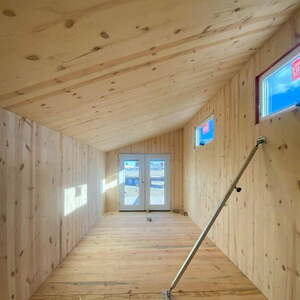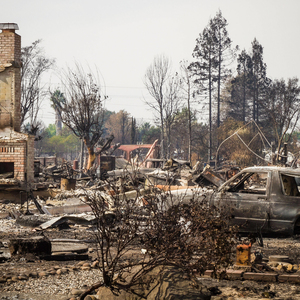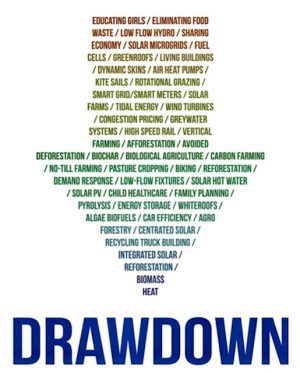
The Los Angeles wildfires are on pace to collectively be the most destructive in California’s history. The Eaton fire alone that ravaged Altadena, is projected to be the second worst in the state’s history. All told, more than 12,000 properties, most of them single-family homes, have been destroyed or severely damaged thus far. And while that figure is a few thousand shy of the destruction toll of Northern California’s 2018 Camp Fire, as journalist Lydia DePillis noted in The Times, “This is a different kind of house.”
The difference in question is one of the homes’ market value; in Altadena the average was $1.3 million by the end of 2024, according to Redfin, and in Pacific Palisades, it’s at least $3.1 million, which is actually down about 6% from the previous year. Considering the acute impacts of these devastating fires on America’s second most populous city, and in several of LA County’s most expensive zip codes, a grim reality comes to bear: California’s insurance crisis is about to get worse.
An insurance market in peril
California was already experiencing a crisis of underinsured homeowners prior to these wildfires. Last spring, I wrote in Fine Homebuilding about how large providers, including the likes of Allstate and State Farm (the state’s largest insurer), were pausing on issuing any new home policies in the state. One industry expert told me at the time this was not an unusual practice, but it also seemed like a harbinger.
Indeed, in recent months large providers have been dropping policies en masse in high-risk areas, the Palisades among them, that suffer from a trifecta of vulnerabilities: high value homes, difficult topography, and high susceptibility to wind, and dry weather. Last July, State Farm dropped about 1600 home policies in Pacific Palisades, according to a California Department of Insurance representative, speaking with CBS News. Insurance providers retreating from California has been a persistent trend for years, but never to this degree.
Consequently, California’s FAIR Plan (the acronym stands for fair access to insurance requirements), commonly known as the insurer of last resort in the states that offer them, has absorbed greater market share in those zip codes. From 2023-2024, FAIR reported a 41% increase in policies issued over a one-year span.
This is a problem no one wants.
According to Alex Michon, area president of the Sacramento office of insurance brokerage Gallagher, his state’s FAIR plan has “about $6 billion in exposure in Pacific Palisades alone” but only “about $700 million in cash” to pay claims, not including reinsurance (aka an insurance company’s insurance on its policies). “If these fires hadn’t happened, FAIR hopefully would’ve done like the California Earthquake Authority and built up huge cash reserves. But they didn’t get that lucky. Now, they’ve got a limit claim that’s probably going to wipe out their cash and get heavily into their reinsurance, and other carriers are going to have to participate.”
And as one of the few insurers that will write a policy for homes with wildfire exposure (FAIR has to by law), that exposure comes down to more than dollars and cents. The greater their market share, the higher the number of underinsured homeowners. “FAIR plans will continue to grow. There’s no other option. But the coverage is extremely limited,” Michon says, referring to FAIR plans’ reputation for high premiums and substandard coverage. To his point, FAIR plans were never designed to be a primary option. But in many areas, that’s just what they’ve become.
Rebuilding for resiliency
On the question of California’s FAIR Plan and the tenuous state of the market, Michon lays much of the blame on his state’s “enormous amounts of regulation.” He points to the California insurance commissioner’s recent issuing of a mandatory one-year moratorium on non-renewals and cancellations. “Carriers will not want to do business in a state that doesn’t let them not renew policies. They need the flexibility to underwrite, not just within zip codes, but house to house,” he says. “We are entering a death cycle that can only be broken by drastic measures and drastic deregulation.”
To be fair, Michon isn’t against all regulations. “There are some good ones out there, like [California’s] building codes. But others cause enormous amounts of red tape.” Of course, this leaves the question: what can California possibly do to mitigate the risks of further catastrophes like the one we are still witnessing?
At this stage, playing the blame game helps no one. But coming to terms with how the state develops residential properties (and with what) is critical. Further, having that discussion without giving due consideration to climate change and the increasing number and severity of climate-induced disasters would be foolhardy. “While climate risks like extreme heat affect an area’s livability, wildfire, flood, and wind risk are more likely to impact a homeowner’s ability to find or afford home insurance,” writes Jennifer Castenson in Forbes. “Paired with the current housing affordability crisis, the cost of insurance could be the difference between a buyer being able to afford a home and not.” To use an indelicate metaphor, this feels like the perfect storm.
To be certain, once the literal dust settles, the rebuilding process will be long and painful, to say nothing of the personal toll hundreds of thousands of Angelenos are enduring and will endure after losing so much. Anticipating these hardships, Governor Gavin Newsom recently issued an executive order waiving California Environmental Quality Act (CEQA) and California Coastal Act requirements for reconstruction. As a short-term measure, this should help with the red tape. The long term will require something more thoughtful.

“When rebuilding after any wildfire catastrophe, it’s critical we use the science that we have,” says Dr. Ian Giammanco, managing director for standards and data analytics at the Insurance Institute for Business & Home Safety (IBHS). “We know what system of protections can increase a home’s chances of survival.” Such protections, or best practices, include things like walls with one-hour fire ratings, airtight envelopes with no attic vents, metal roofs, using fire-resistant Class A wood for outside decks, and designing homes with simple and compact forms, meaning doing away with all the fancy dormers, doo dads, and complex roof lines that all create inviting intersections for fire on the move.
Giammanco is careful to distinguish wildfires as a unique phenomenon among the usual cast of natural disasters. This is because they require deploying “resilience tools across entire neighborhoods and communities,” he says. One such measure is constructing strategic fuel breaks in nearby forestland. These buffer zones are strips or blocks of land, many of them several miles wide, where vegetation and detritus have been heavily thinned to diminish the risk of wildfires spreading quickly.
Of course, with the severity of this year’s Santa Ana winds, fuel breaks are more of a stopgap for fire crews who need precious time to catch up with the fires. But when rebuilding efforts do get underway, many are hopeful that renewed development patterns will allow for manufactured fuel breaks between sub-developments, rather than grouping a bunch of wood construction close together. “We just need to have the will to do this,” Giammanco says.
Exactly how these fires will impact California’s building code and insurance market remain unknowns, but few are optimistic about the outcomes. Whatever the case, LA’s future will be defined by rapidly changing climate conditions that we sorely need to get a firmer grasp on.
Justin R. Wolf is a Maine-based writer who covers green building trends and energy policy. He is the author of Healing Ground, Living Values: Stanley Center for Peace and Security, published by Ecotone.
Weekly Newsletter
Get building science and energy efficiency advice, plus special offers, in your inbox.













4 Comments
California politicians actually believe that price controls work. They don't. California prohibits insurance companies and utilities from receiving sufficient revenues to run their businesses. How many contractors would agree to build a house at less than their cost? Not a single one that I know.
The numbers cited in this article are confusing. In most cases, insurance will only pay for the cost to replace the physical structure (or in some cases, the vaule of the structure) not the value of the land or the total value of the land and house.. I think the numbers they cite are resale values, not the cost to rebuild. I doubt the average house in Pacific Palisades will cost $3.1 million to rebuild and $1.1 million in Altadena.
Having said that, lets assume for a moment that 12,000 houses were destroyed and the average cost to rebuild is $1.5 million (even in California that should produce a nice size house as an average). That is $18 billion, far less than the insurable losses in major hurricanes. To put that in perspective, that is about 2 months of net income for Apple, 3 months for Microsoft. Yes it is a lot of money, but it should be manageable.
I suspect the bigger issue may be the other costs associated with the fires. First, there is the destruction of infrastructure: roads, electrical lines, gas, water and sewer systems, and the like. That could be a huge cost. Then there is lost revenue from businesses unable to reopen. Finally, I wonder how much toxic debris the fire left in its wake. Natural wood products that burn leave some toxicity; and there are so many synthetic and man made materials that were consumed . I wonder what needs to be done to clean that up and how expensive that will be. As people rebuild, they may want to think about whether it makes sense to use huge quantities of things like PVC trim and siding in buildings and houses.
Our area of California’s Central Coast lost 50 homes to a wildfire back in 2020, we rebuilt one of them and I’ve spoken to a number of homeowners and contractors that rebuilt others, so I've got a bit of experience to speak from.
I’m sure there are exceptions, but it seems to be standard that insurance does not pay for you to build a new house, or the market value of the structure, they pay for what they consider the cost to rebuild your existing house as is, even though virtually all of them would be illegal to rebuild like for like due to the advancement of codes.
California has some pretty onerous codes, PV is required, WUI requirements, combustion appliances need to be prewired for electric conversion, fire sprinklers, etc.. There's also the costs of a rental home for 2-3 years, architect, geotech, civil engineering, structural engineering, and permitting fees, the latter of which were $17k for a 2400sf home AFTER most were waived since insurance didn’t cover it.
With that being the case, virtually everyone is significantly underinsured, and on top of that, the insurance company WILL lowball you, especially if you’re in an expensive coastal market like ours. Anyone with a significant insurance claim should consider hiring a public claims adjuster to get a higher total number, but you should expect to foot some of the cost of the rebuild, proportional with the age of the home.
We ended up advising our client to sell their lot as-is and use the insurance payout to buy a different house, they still decided to rebuild and are definitely worse off financially because of it.
Then there's other fun things like PG&E (the utility monopoly for most of Northern California) that took almost a year after completion to hook up permanent power. Thankfully we managed to get a CO with the temp power pole, other homeowners weren’t so lucky.
Almost all of the post-fire cleanup was done by the government, the building lot was effectively scraped clean of anything that burned, including the foundation. As I understand, there was no cost to the homeowner for that.
I’d love it if we had the guts to implement managed retreat for WUI zones, or at least let the market take care of it by making all the homes effectively uninsurable unless they go well beyond WUI. Of course the people who own those homes would throw a fit, so instead we get half ass solutions that kick the can down the road and spread the cost of people living unsustainably to everyone else.
I would love to see people move out of high risk fire zones. But if people retreated from high risk fire zones, where would they go? There seems to be very little buildable land left in California, at least land where there is water and it is not in a very risky fire zone.
Log in or create an account to post a comment.
Sign up Log in